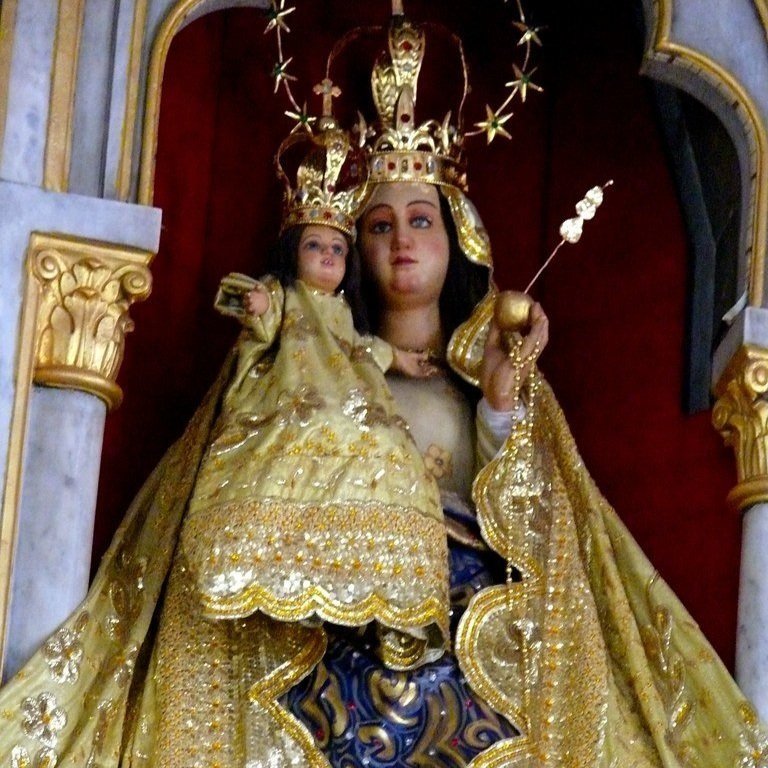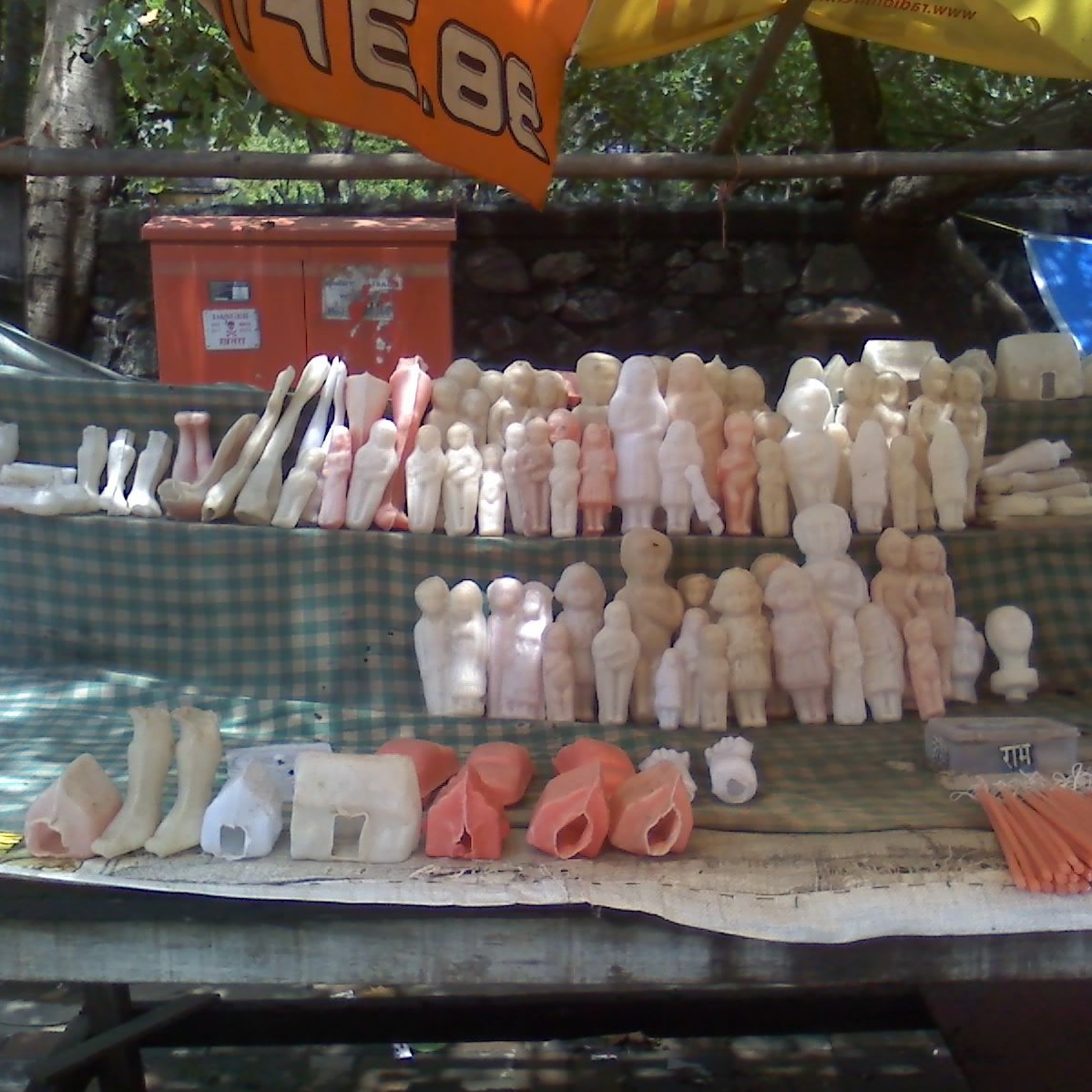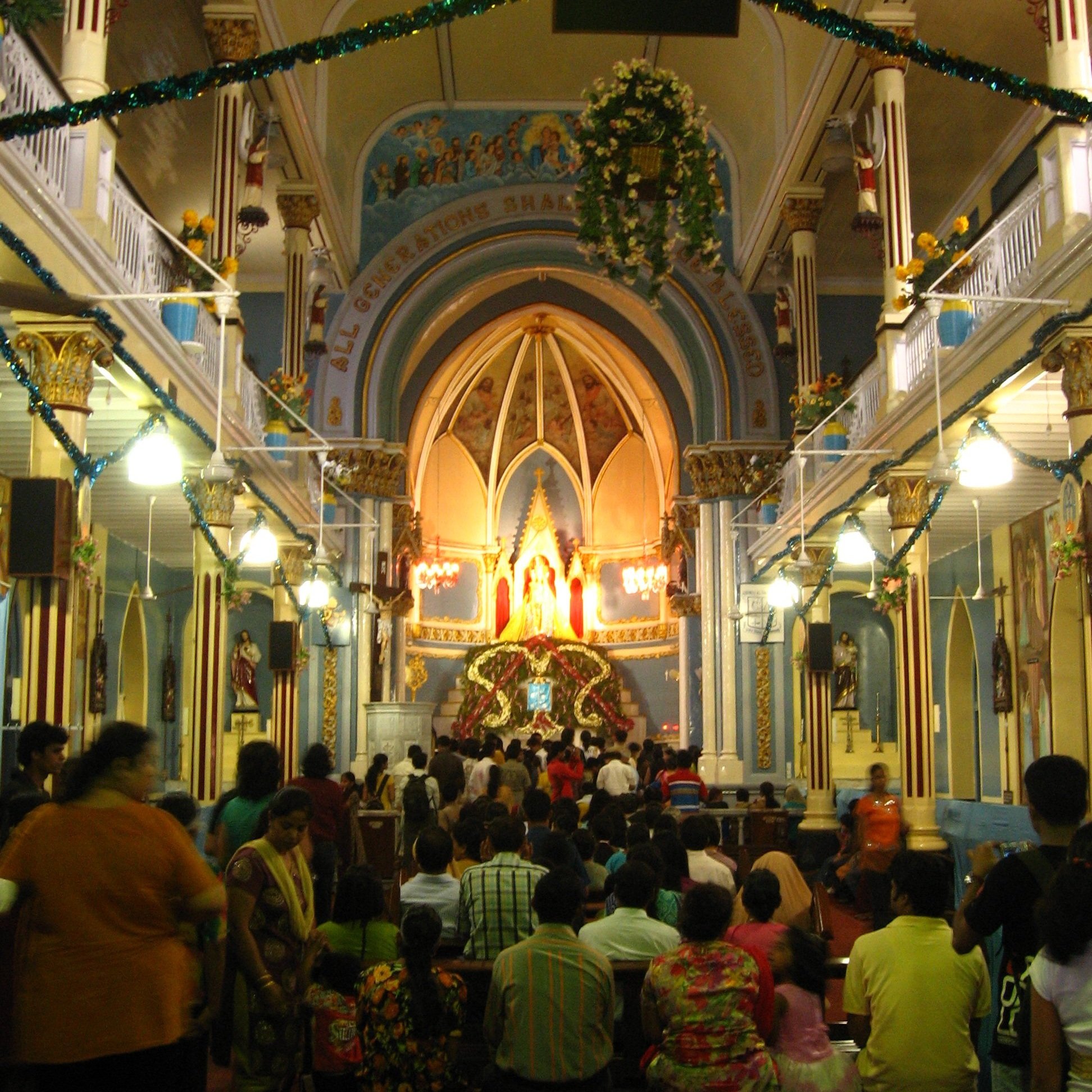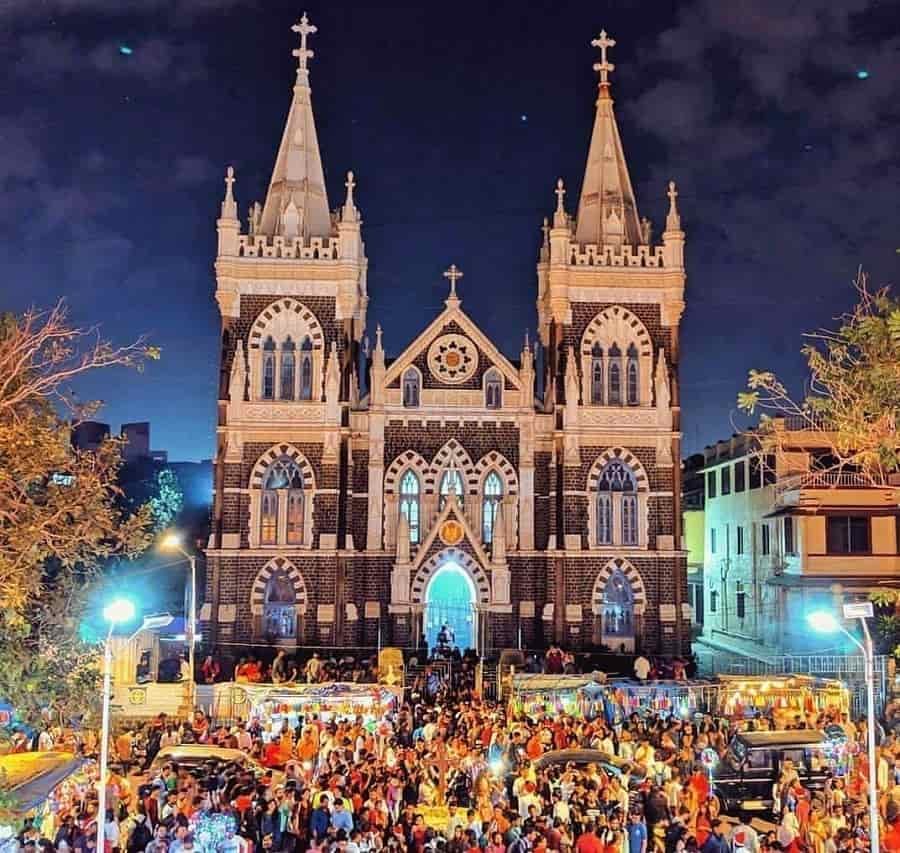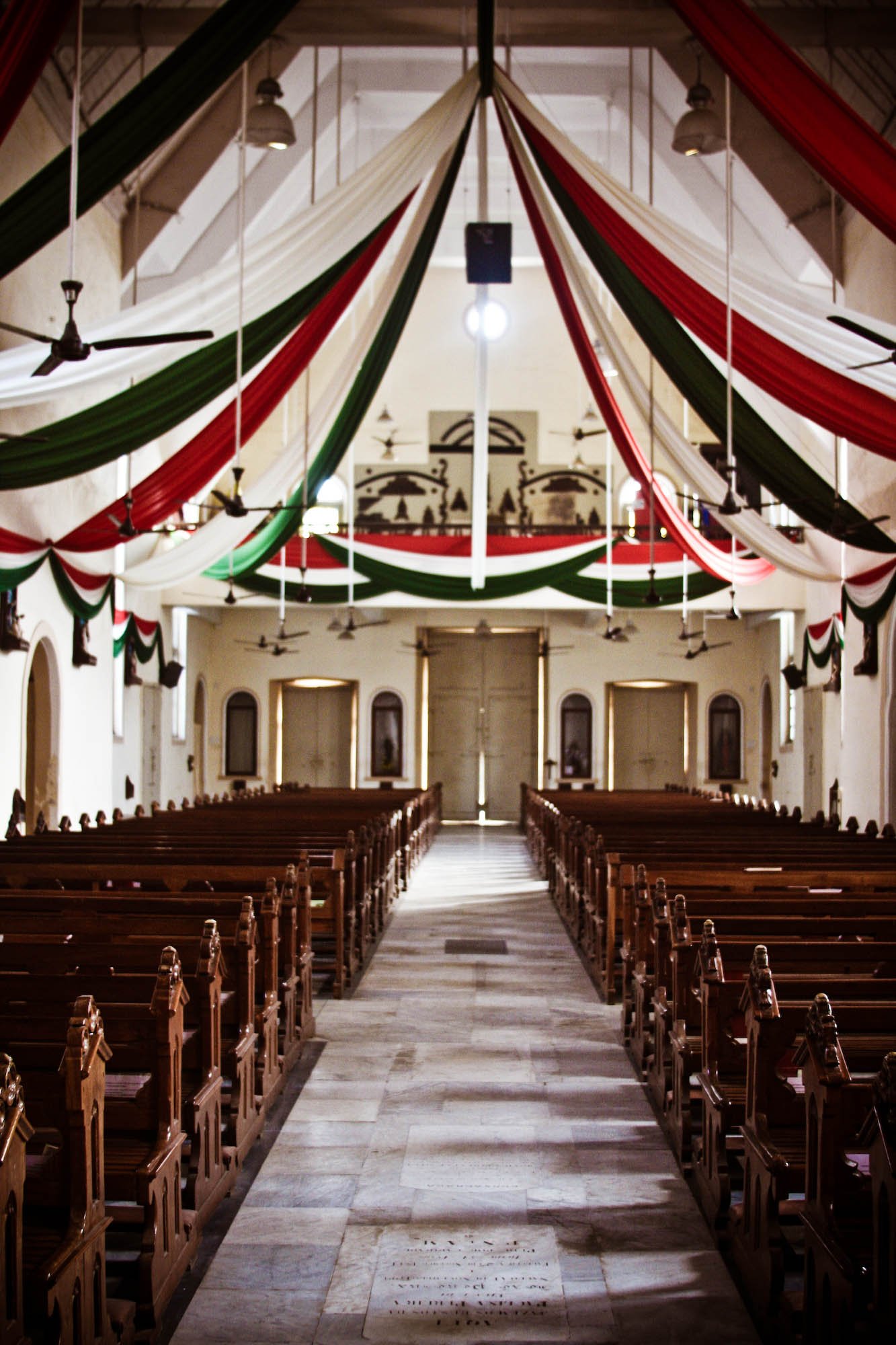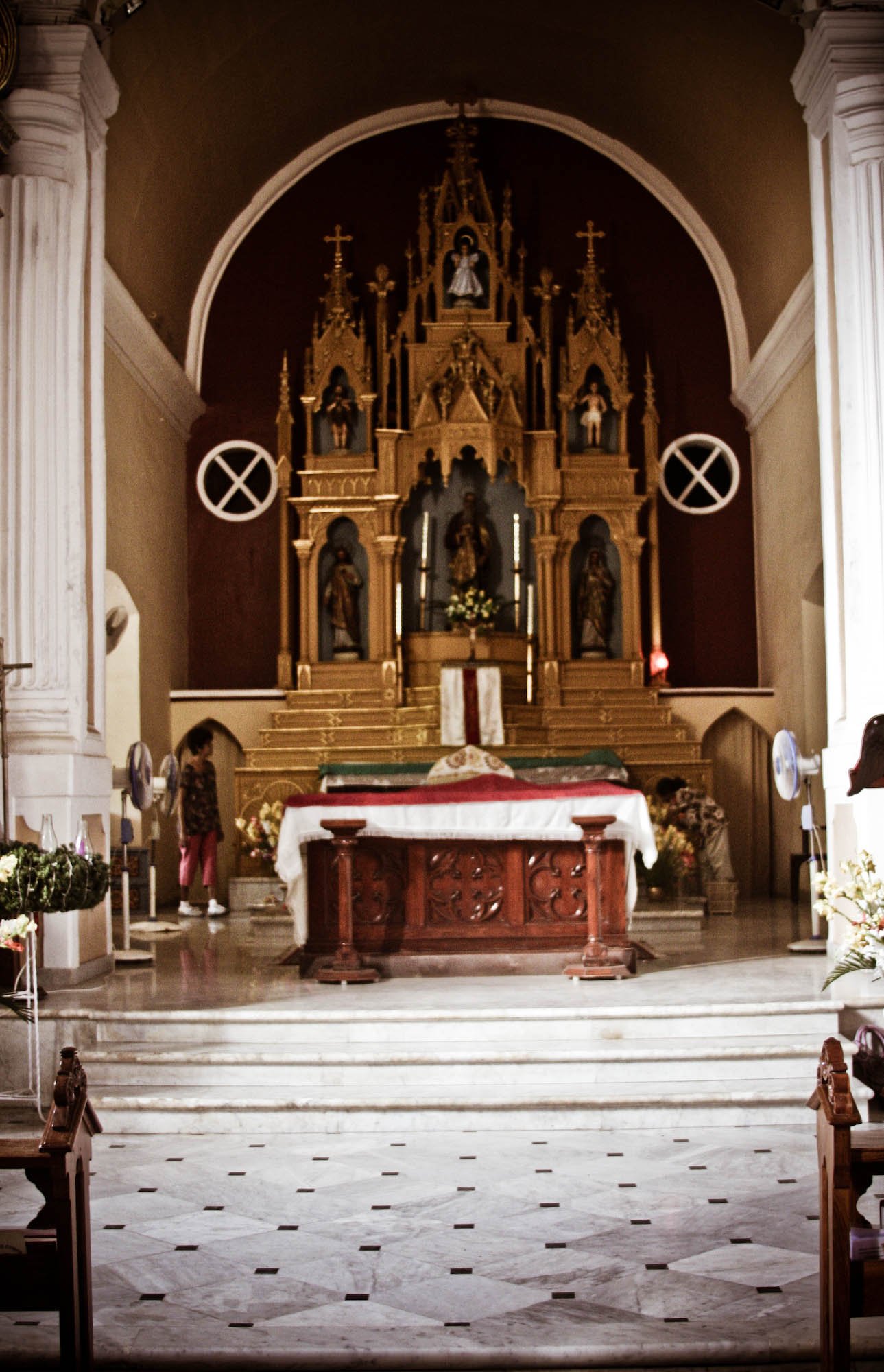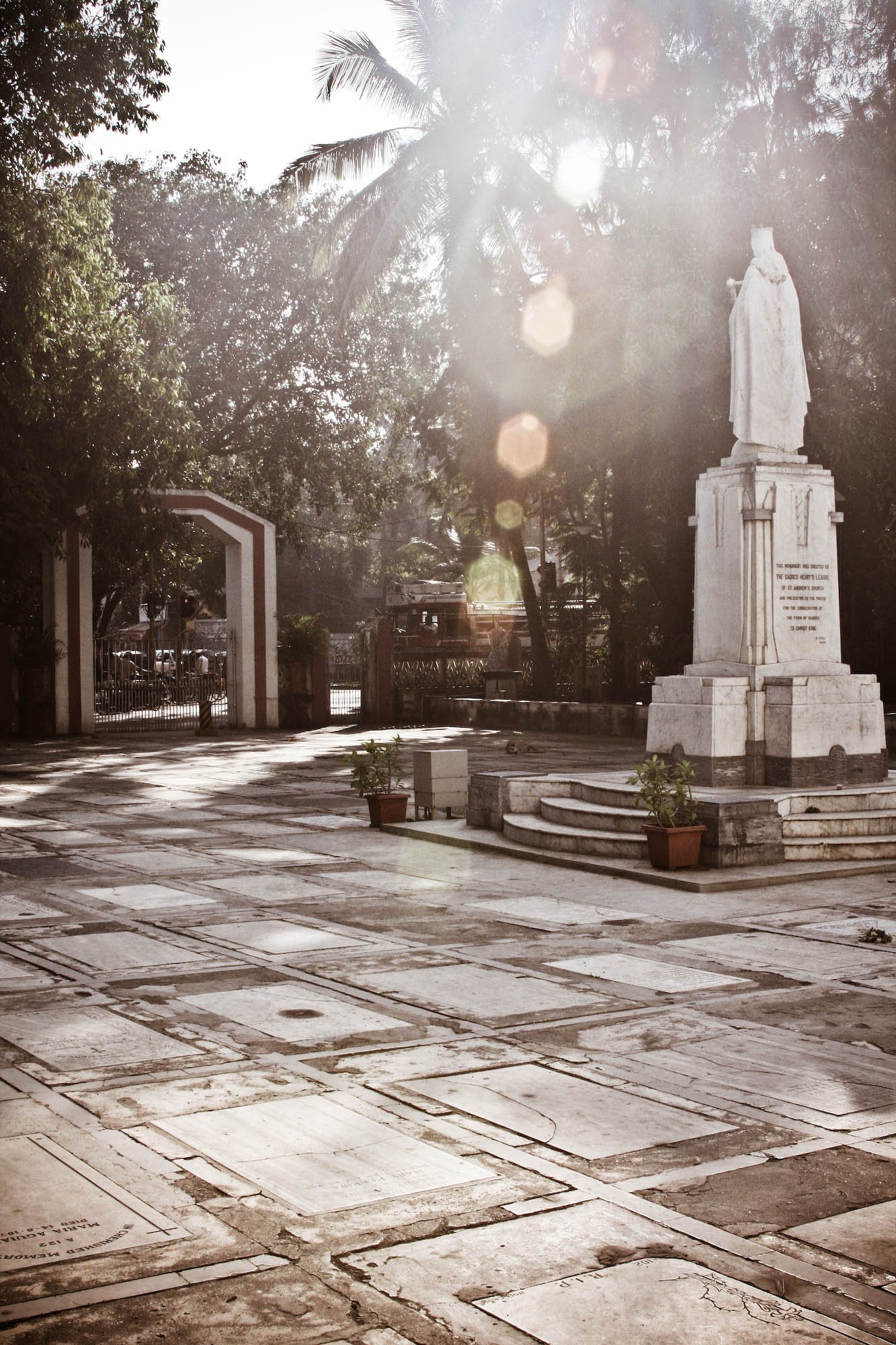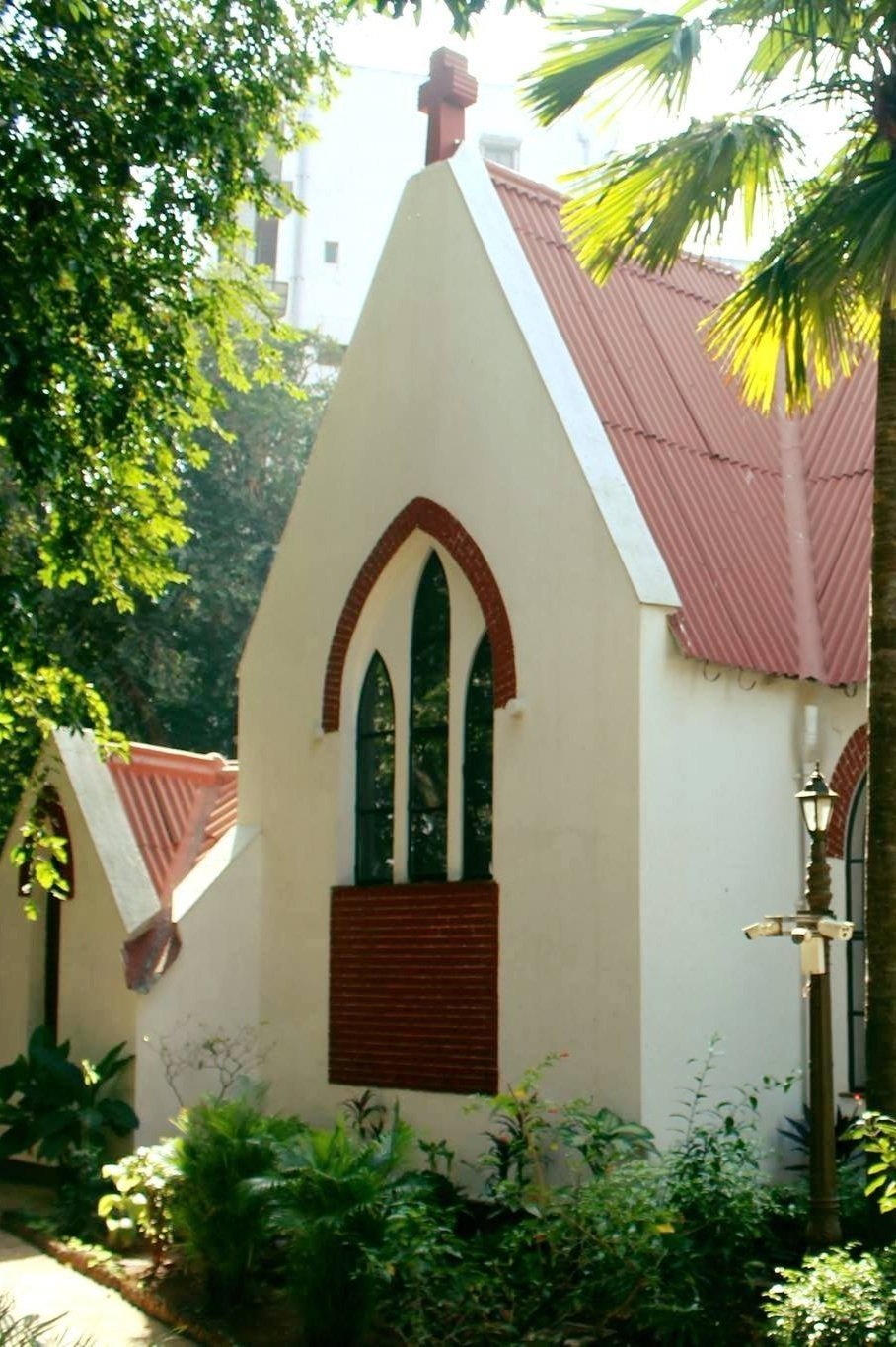BETWEEN BELFRIES & BELIEF
Bandra, much has been said, written, explored and lost. And yet, we continue to look at it and find new ways of exploring it. Once the Portuguese took possession of the island of Bombay, the Portuguese gave the Jesuit Priests the sole ownership of Bandra Parel, Wadala and Sion. They built several churches in Bandra facilitating its unique distinction of being a town having the most Roman Catholic churches anywhere in the world, all within a four sq km area.
In Between Belfries & Belief, we will look at three churches and a basilica that lie at the heart of the neighbourhood
MOUNT MARY CHURCH
The famous Mount Mary Church or Basilica of Our Lady of the Mount had modest beginnings. It was built as a modest little oratory atop the hillock for the private devotion of the Fathers. It was a bamboo and thatch shelter. The statue, shipped from Portugal, found home in it by 1570. A few years later, this private oratory was enlarged and made into a chapel to serve the garrison stationed at Castella de Aguada, the fort, at Land’s End. Then came the Arab Pirates. Attracted by the gold lined object in the statue’s hand, cut it and made off with it. The statue was re-adorned with baby Jesus in her arms and placed inside the chapel. This was around year 1700.
When the Marathas over-ran Salsette in 1739, the statue of Mount Mary was tossed into the sea and the chapel set on fire. For over 20 years, the sacred spot presented a scene of desolation, no Aves, Salves or mass bells rose from here. Around 1761, the statue was recovered from the sea and the chapel was rebuilt for divine worship. It wasn’t as simple though and comes with an interesting story. It goes that a koli fisherman dreamt that he would find a statue in the sea. And he did. The statue took a new name as per koli traditions and was called mot mauli or the pearl mother. Syncretic nature of devotion to Mount Mary by both Hindu and Christian Kolis perhaps stems from here. The ‘pearl mother’ was taken by the fisherfolk to St Andrews Church and later carried in a procession and reinstated at its original spot. In 1896, Mount Mary Chapel was pulled down because of the plague epidemic and a new building in Gothic Style replaced it in 1904. It commands a beautiful view of the Arabian Sea to the west, and the twin towers stand tall. On a lofty altar of Marble stands a life-sized statue of Mary, infant in her arms, smiling approvingly at the faith that surrounds her.
Every September the feast of Saint Mary is celebrated on the Sunday following 8th September. The week-long celebration known as The Bandra Fair draws thousands of people to this church on the hill. The entire area is decorated with festoons and buntings, stalls selling religious articles and Goan sweets dot the area. What is interesting are the assortment of candles shaped like hands, feet, body parts and other objects (car and passport included) that are lit in the church, with a hope that Mother Mary will cure the afflictions or consider their appeals and help.
ST. ANDREW’S CHURCH
Although the Basilica of Our Lady of the Mount predates other churches in Bandra, it was not a parish church. The Church of Santa Ana (St. Anne’s Church) had the distinction of being the first parish church of Bandra. With the spread of Christianity and an increase in the number of parishioners, a new parish was created – of St. Andrews. The exact date of its construction is not known but what we do know is that when the Marathas invaded Bandra in 1739, they destroyed many places of worship. Santa Ana was destroyed too but by the British as they perceived a threat from the Marathas using that location as a security outpost. With this, the Church of St. Andrew’s became the oldest church in Bandra. The church compound holds a remnant of Santa Ana – a 17 ft high made of a single stone with, carved with 39 emblems of the Passion of Christ. It stands in a corner without much celebration.
Outside, the church has a distinctive Portuguese-style façade, with a small hole in the centre, above the statue of St. Andrew which allows the rising sun to shine into the church. On the outer wall of the church compound, facing Hill Road, is the dried-up water-hole with the cracked lion head carving on the top where carriage horses stopped for a drink. The plaque above the water spout reads that it was presented to the Municipality of Bandra in 1894.
Inside, The teakwood altar extends almost to the roof and carries statues of Sacred Heart, Our Lady and St Andrew. Smaller statues of St John the Baptist, St Sebastian and the Bom Jesu are near the main statues. The statue of St Andrew holds an X-shaped cross, because when he was to be crucified, St Andrew asked that he not be hung upon a conventional cross, as he felt he was unworthy of dying on the same cross as Jesus.
St Andrew Church houses a mini museum that displays an organ, an old confessional, a tabernacle, old crosses, music stands, a communion rail and an elaborate candle stand. The church conducts regular masses on all days.
And if walking through gravestone tiled ground is your thing, it makes the visit both interesting and eerie. The names engraved suggest intermarriage between local kolis and Portuguese settlers. All you have to do is keep your eyes open – both, to read the subtext and avoid stepping on the graves – if you can, that is.
ST. PETER’S CHURCH
From 1739 to 1853, St. Andrew’s was the only parish church in Bandra till St. Peter’s parish was formally created. The foundations for the St, Peter’s Church building was laid in 1852 and completed a year later. By 1938, the original church building of St. Peter’s was found to be inadequate and a new building was built to accommodate the growing number of parishioners.
The new St. Peter’s Church building has a Romanesque design and is listed as a Grade A heritage structure by the Heritage Society of India. The St. Andrew’s Church building also won the Urban Heritage Award in 199
The handsome Romanesque façade of St.Peter’s is visually stunning and I can’t help but stop and admire it. At the entrance to the Church is a marble statue of Christ with the inscription “I am the Resurrection and Life”.
Inside St. Peter’s Church, Bandra, Image: Unknown
The Church interiors are vast and unlike most churches which have a rectangular hall, St. Peter’s is squarish. It can accommodate a thousand people easily. Inside, its excellent stained-glass windows, around twenty in number, look resplendent in the sunshine or when the lights are on.. The interiors are lit up with the light coming in from the stained glass windows creating a beautiful glow within. One of the highlights of the Church is a relief of Da Vinci’s “The Last Supper” at the altar in Carrara marble. Above the altar is an imposing and larger than life size statue of Sacred Heart, flanked by stained glass windows showing scenes in the life of St. Peter.
ST. STEPHEN’S CHURCH
Bandra is almost overwhelmingly Roman Catholic with the exception of the only Anglican church in the area — St. Stephen’s.
When the Marathas ceded Bandra to the British in 1802 under the Treaty of Bassein, many British Protestant Christians moved to Bandra. St. Stephen’s Church was built in 1845 “to cater to the spiritual needs of British Protestant Christians living in Bandra and nearby areas”. St. Stephen’s Church is known for its stained glass windows (shipped all the way from England), which depicts stories from the Bible. The Church also has a well maintained cemetery.
ABOUT BYLANES OF BANDRA
Our walk, Bylanes of Bandra, explored the delightful mix of history, colour, culture and people that lie in the by-lanes of its idyllic villages for eleven years. Part fascination lay in observing the Goan style sosegad soul of this pocket contrast with the buzz that lent to its hip and happening air and part lay in crosses and church-dotted stretch from Mount Mary to Hill Road. Between Belfries & Belief stems from there.



